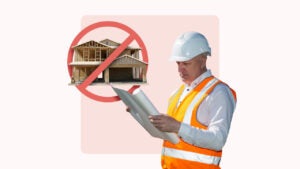Securing housing after incarceration

Key takeaways
- Homelessness and incarceration often go hand-in-hand with formerly incarcerated people being 10 times more likely to be homeless (PrisonPolicy.org)
- The United States holds a repeat offender rate of almost 44%, one of the highest in the world (WiseVoter.com).
- Programs and government assistance aim to remove the main challenge of societal reentry by providing stable independent housing for formerly incarcerated individuals.
Leaving prison can be more of a challenge than many people realize. Finding affordable and stable housing is often one of the biggest challenges facing formerly incarcerated individuals. But securing a place to live is critical for successful re-entry into the community. The good news is that there are more programs and options than ever before to help secure housing after incarceration. From transitional programs to private landlords willing to give people a second chance, resources exist to find a home and take the first steps toward getting your life back on track. With some research and perseverance, safe and secure shelter is possible.
Homelessness among former inmates
Today, there are about five million Americans who were formerly incarcerated. These individuals are 10 times more likely to be homeless than the average citizen, and research shows it is most likely to happen immediately after release. In addition, individuals who served more than a single term are twice as likely to be homeless than one-time offenders.
Homelessness and incarceration often fuel one another, creating a revolving door between the streets and jails. Individuals experiencing homelessness are at greater risk of incarceration due to the increased potential for engagement in petty crimes, substance abuse, untreated mental illness and violations of parole or probation. Following release, formerly incarcerated persons confront numerous barriers to securing housing and employment, frequently forcing them back into homelessness. Without adequate transitional support, many end up re-incarcerated for minor offenses or parole violations.
This cycle of homelessness leading to incarceration and incarceration leading to homelessness may seem inescapable. Although some may be able to lean on the crucial ties that familial assistance provides, many are not afforded these options. Numerous studies cite the importance family plays in successful reintegration into society, but longer prison stays can put significant strain on these relationships. The location and length of incarceration can sometimes damage familial bonds to the point of no return, making life on the streets the only option for those unable to return home after release.
Housing options for former inmates
There are several resources available to help recently released and former inmates who need safe housing after incarceration.
-
-
Officials recognize that re-acclimation into a free society can be an enormous adjustment for recently released inmates used to a strict environment.
-
Recovery residence
Also known as a halfway house, this type of temporary housing is specifically designed to help recently released inmates. It is not a long-term housing solution and can be mandated as a condition of release or parole. During their stay, residents must follow house rules, including living a life free of crime and not violating parole. Rent at a recovery residence can range from $88-$1,300 each month, depending on where you are located. -
Shelter
A homeless shelter is more of an immediate type of housing reserved for emergency needs. It is not an ideal long-term housing solution, as one New York study found that those in emergency shelters were more likely to be reincarcerated than those who found other forms of shelter. Additionally, some states like Hawaii and Illinois do not recognize homeless shelters as approved residences for parole.
-
Recovery residence
-
It is challenging to maintain familial and social relationships while incarcerated. The longer one is imprisoned, the more likely that these relationships are to suffer over time. However, family and friends can offer some of the most secure housing options for a recently released inmate. It is also one of the preferred options for parole officers looking for stable housing as a condition of parole.
-
There is also federal support available in the form of permanent supportive housing (PSH). These programs are typically funded by the federal Housing and Urban Department (HUD) and are a housing subsidy created to support vulnerable homeless populations. Housing assistance is further boosted by professional support services to help ensure parolees do not re-offend. Most PSH programs require that it be no more than 90 days since your release date, but terms may vary.Rapid rehousing is another form of available government housing, but it has a different approach. Instead of offering group accommodations, rapid rehousing pairs former inmates with a dwelling of their own. There is also a case manager to provide any necessary rental or management support for up to two years.
-
Financial support options for former inmates
When you leave prison, lack of funds can put you at a disadvantage when finding housing. Couple this with virtually no job prospects and you have a catch-22 situation. Thankfully, several financial assistance programs could potentially help foot the bill and get you back on your feet.
Government assistance
The federal government lends some aid through multiple programs benefiting ex-inmates.
-
-
As part of the Department of Health and Human Services (HHS), the Temporary Assistance for Needy Families (TANF) program is designed to provide low-income families with financial assistance via a monthly cash grant. This grant is available to felons with children who are struggling to achieve self-sufficiency. As such, payments can be used for a number of your average monthly living expenses, such as rent, food, utilities, medications and transportation. TANF has programs in each state to provide local assistance.
-
The Supplemental Nutrition Assistance Program (SNAP) is offered by the U.S. Department of Agriculture’s Food and Nutrition Service. SNAP was created to ensure that no American goes hungry, offering food stamps to give people access to free or reduced-cost food. These benefits are distributed via an Electronic Benefit Transfer (EBT) card that you can use as a debit card at authorized retailers. SNAP benefits can also include allowable shelter deductions for taxes, fuel, electricity, water and phones. However, requirements regarding income and benefits change regularly, so be sure to check to see if you qualify.
-
The Low Income Home Energy Assistance Program (LIHEAP) is also federally funded. It assists low-income residents with energy assistance to stay warm during the winter and cool during hotter months. LIHEAP also offers assistance when there is an energy crisis or minor home repairs that need to be made due to an energy-related issue. LIHEAP can also help with weatherization costs to prevent future extreme weather-related damages.
-
The United States Department for Housing and Urban Development (HUD) is another source for housing support if you have difficulty affording rent. There are public housing options reserved explicitly for low-income renters who otherwise could not afford the growing cost of rent in their neighborhoods. The Housing Choice Voucher Program, also known as Section 8, can provide free or reduced rent at an eligible rental of your choosing.It can also help when you are living in privately owned subsidized housing. HUD offers assistance to landlords so they can pass those savings to low-income renters through discounted rent each month.
-
Rebuilding credit
It is nearly impossible to keep up with your financial responsibility when behind bars, leaving months of unpaid expenses, such as rent and utilities. Most inmates are released to find out that their car insurance has lapsed, and their credit scores have decreased dramatically from all of the unpaid bills.
Rebuilding credit is a typical process for many inmates to attain permanent future housing, but there are some things you can do to help the process along.
-
Check your credit score.
Before you know what needs to be done, you need to know where you stand. You can check your credit score for free, so you can review your report to ensure there are no errors. -
Start paying off debt.
Once you know what you owe, begin paying down your debt. You want to aim for low credit utilization with an ideal debt-to-income ratio of 70/30. -
Open a bank account.
Find the best bank for your needs and open an account. This will allow you to set up regular payments for things like car insurance so your credit score won’t be affected by late payments. -
Apply for a credit card.
A credit card is one of the best ways to rebuild credit when you make your payments on time and keep your credit utilization low. If you do not have the credit to qualify on your own, you can apply for a secured credit card that uses collateral to guarantee your line of credit.
Resources
These resources might be helpful for you to find secure housing after incarceration.
-
-
- The Fair Shake Reentry Resource Center offers national, state and local reentry guides to offer support of all forms to former inmates.
- Prison Fellowship offers reentry ministry and resources for those of faith.
- Lionheart Foundation provides a state-by-state resource guide of reentry services.
-
- Volunteers of America has an enormous network of volunteers and professionals who will work one-on-one with former inmates while also providing crucial support, such as help with housing.
- Hope for prisoners offers each individual an 18-month mentoring program that assists them in reintegration, goal tracking and more.
-
- The Substance Abuse and Mental Health Services Administration (SAMHSA) is a leading federal resource to help those with mental health issues, including those formerly incarcerated.
- HHS’s Office of Minority Health offers specialized services and resources for former inmates.
-
- The Angel Tree Program supports children of current or former inmates with a particular focus on holiday gifts.
- Saving Kids of Incarcerated Parents (SKIP, Inc.) has locations around the U.S. to provide a local assistance unit for children of incarcerated parents.
- Assisting Families of Inmates is a program specifically designed to ease the burden of incarceration on family members, helping during and after a parent’s sentence.
-
- HUD offers official guidance regarding renters’ rights and housing providers.
- Zumper.com offers a listing of apartments that may not require a background or credit check.
- Zillow’s Community Pillar Program allows renters to find rentals with relaxed requirements.
-
- The Work Opportunity Tax Credit (WOTC) is a federal tax credit meant to incentivize business owners to hire those who were formerly incarcerated. Under the program, ex-felons must receive employment within either one year of release or the end of parole or probation.
- The Second Chance Jobs for Felons is an apprenticeship program that helps felons find stable employment through free on-the-job training and classroom education. There is a searchable database of programs so you can find a program near you.
- The Prison Fellowship is a religious organization that provides resources for interviews, resume building and a list of programs that offers second chance employment for former inmates.
-
You may also like

‘We buy houses’ companies in Wisconsin

Securing housing after domestic violence




